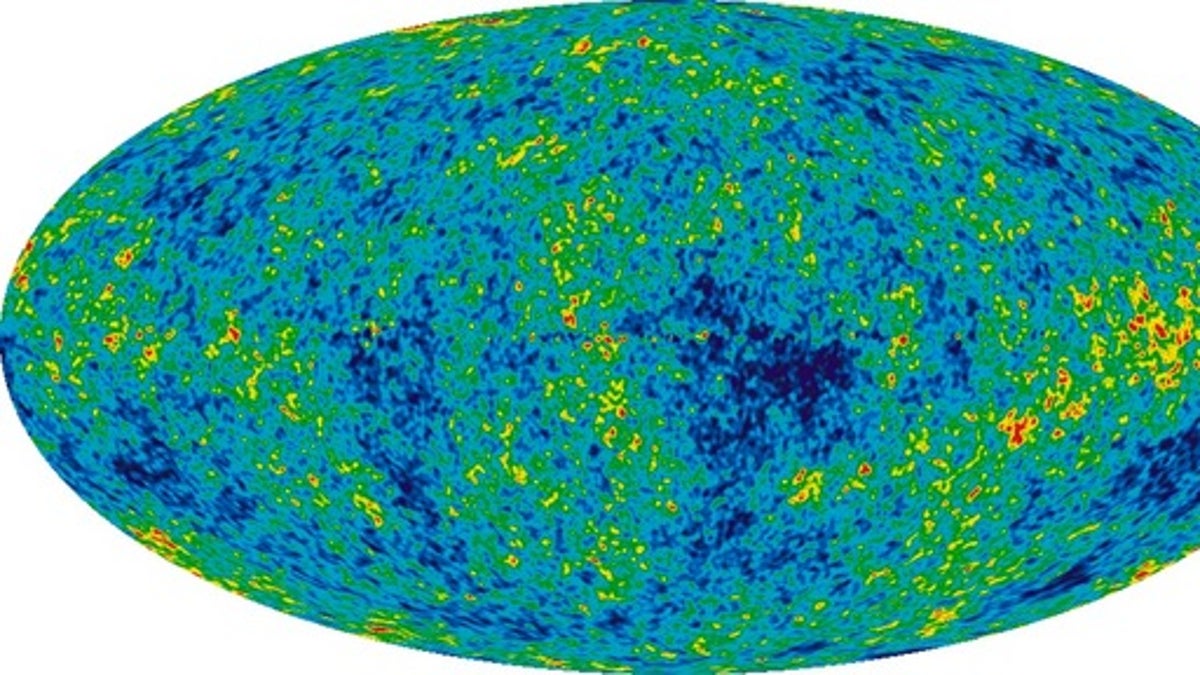
The detailed, all-sky picture of the infant universe created from nine years of WMAP data. (NASA / WMAP Science Team)
Astronomers have released a new "baby picture" of the universe.
The all-sky image draws on nine years' worth of data from a now-retired spacecraft dubbed the Wilkinson Microwave Anisotropy Probe (WMAP).
WMAP launched in 2001 and from its perch a million miles away from Earth (in the direction opposite the sun) it scanned the heavens, mapping out the afterglow of the hot, young universewith unprecedented accuracy.
This image maps the temperature of the radiation left over from the Big Bang, at a time when the universe was only 375,000 years old. It shows a temperature range of plus-or-minus 200 microKelvin, with fluctuations in the so-called cosmic microwave background radiation appearing here as color differences.
These patterns allow astronomers to predict what could have possibly happened earlier, and what has happened in the billions of year since the universe's infancy. As such, the spacecraft has been instrumental in pushing forward cosmological theories about the nature and origin of the universe.
Among other revelations, the data from WMAP revealed a much more precise estimate for the age of the universe — 13.7 billion years — and confirmed that about 95 percent of it is composed of mind-boggling stuff called dark matter and dark energy. WMAP data also helped scientists nail down the curvature of space to within 0.4 percent of "flat," and pinpoint the time when the universe began to emerge from the cosmic dark ages (about 400 million years after the Big Bang.)
The probe retired two years ago, and the WMAP science team is now releasing its final results, based on a full nine years of observations.
"The universe encoded its autobiography in the microwave patterns we observe across the whole sky," Charles Bennett, an astrophysicist at Johns Hopkins University who heads the WMAP science team, said in a statement. "When we decoded it, the universe revealed its history and contents. It is stunning to see everything fall into place."
